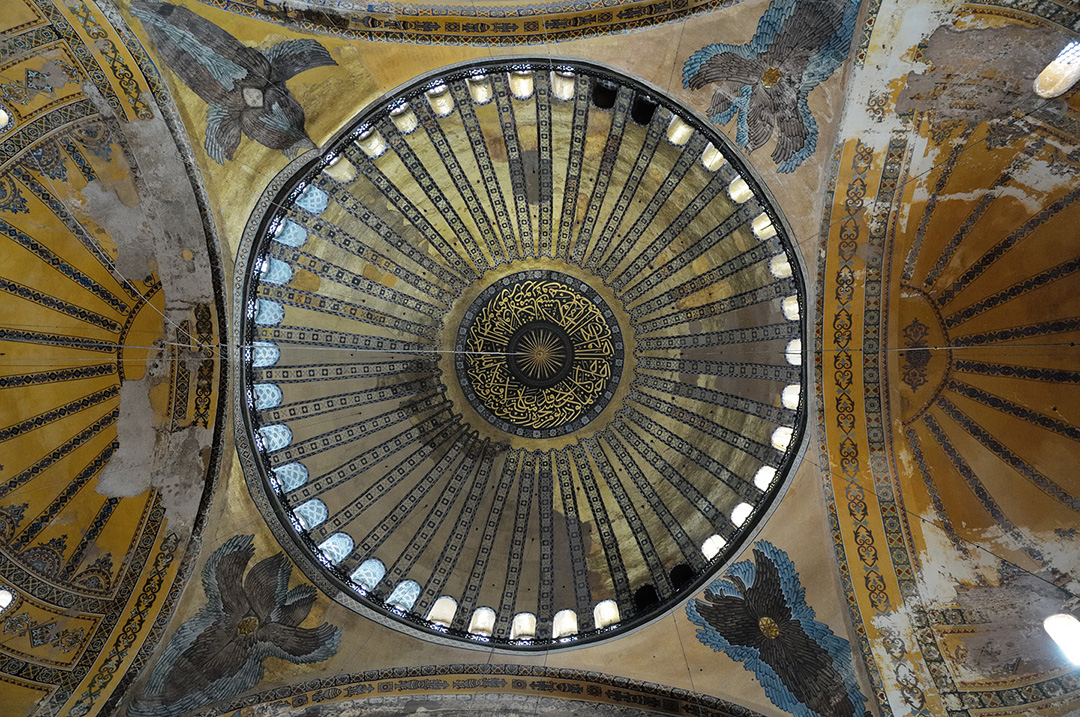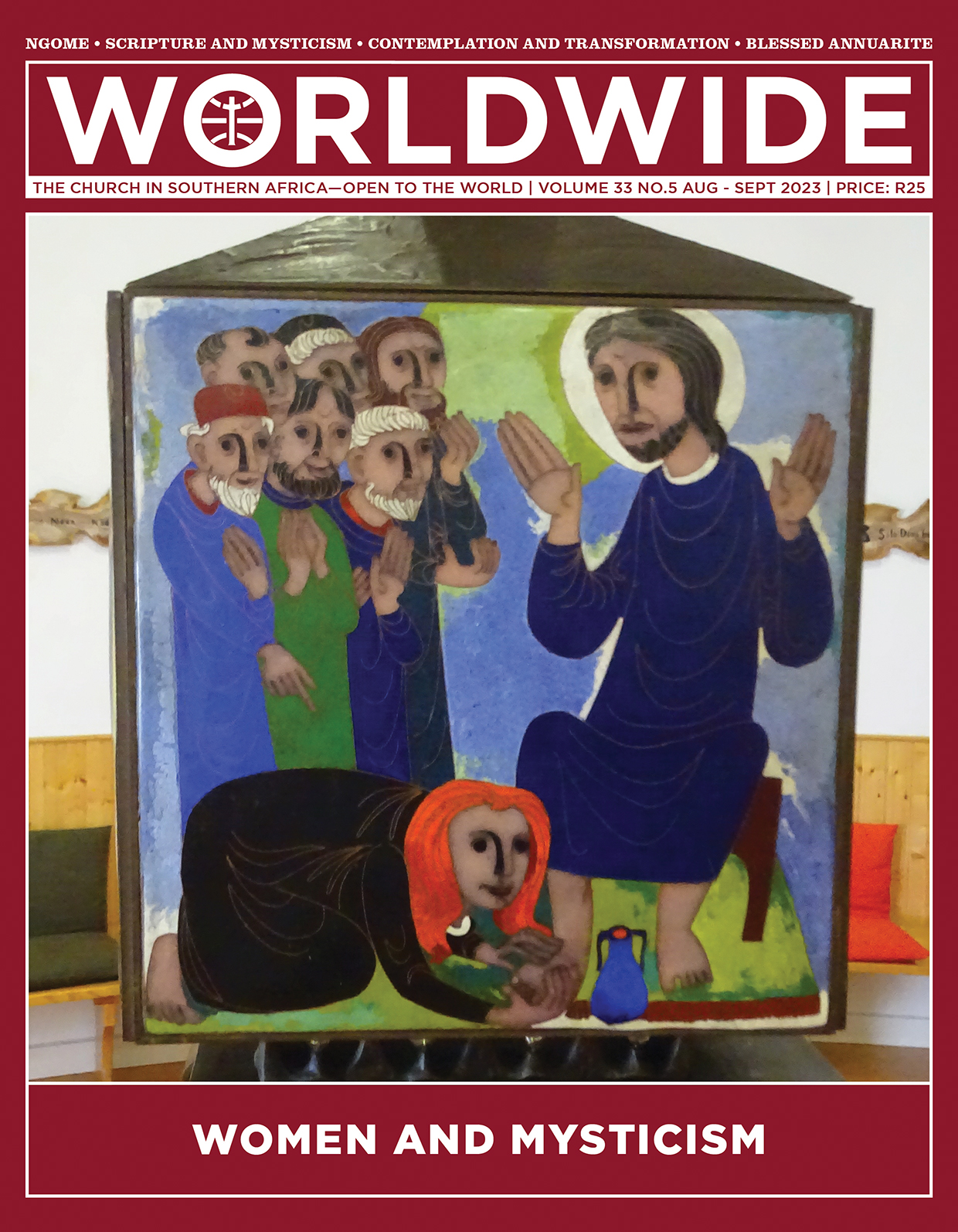
WOMEN AND MYSTICISM
Mary anoints Jesus’ feet at Bethany (John 12:1–8). The scene is part of a series which represents passages of women with a prominent role in the Scripture. The decorations are placed around the sides of the Tabernacle in the Chapel of Meditation at the University of Mystics in Avila, Spain.
Mary listens to and manifests her love for Jesus. Contemplation becomes the mesh in which her Spirit-led actions find their meaning and support.
SPECIAL REPORT • EDITH STEIN
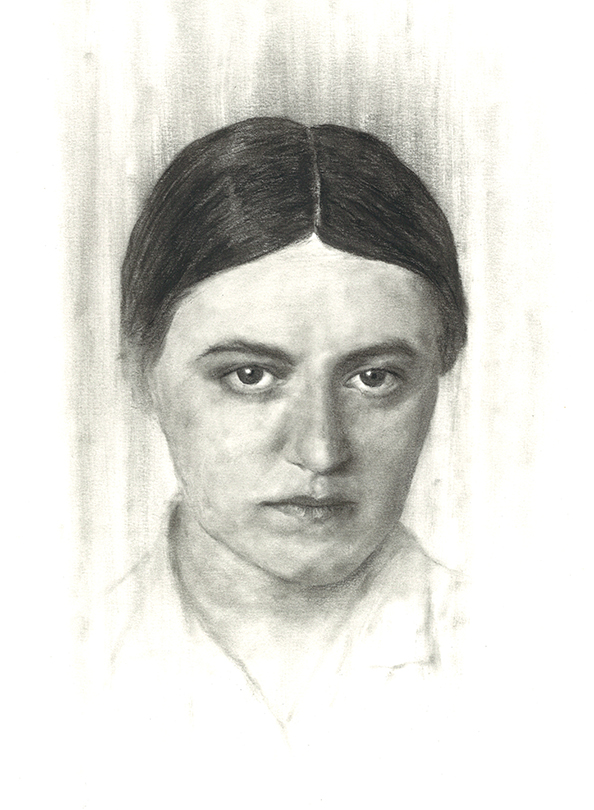
A free and liberating woman
Edith Stein was born in Breslau, Germany, on 12 October 1891. A Jewish philosopher, she converted to Catholicism and entered the Discalced Carmelite Order where she took the name of Teresa Benedicta of the Cross. She died in Auschwitz concentration camp on 9 August 1942 and was canonised by St John Paul II on 11 October 1998
BY Fr Francisco Javier Sancho Fermín OCD, Theology PhD | University of Mysticism, Ávila, Spain
To enter into Edith Stein’s personality, into her message for today, is not an easy task. The multidimensional display which is visualized in her life cannot be explained with only one colour, even if the direction of the brushstrokes makes us look upwards. We will try, then, to unravel in its master lines this fascinating work of art that is the biography of Edith Stein.
When in 1983 the German Post Office issued a stamp of Edith Stein, it justified it with the following words: “Edith Stein is one of the most significant German women of our century. People of various vocations, confessions and from all continents have recognised in Edith Stein—as a Jew and a Christian, as a scientist and working woman, and as a victim of violence—a Follower of Christ. Her goal was to help people, who considered themselves Christians, to build their lives. She was especially concerned with making women aware of their roles in society and in the Church in their ´struggle´ for equal rights”. (Hackert 2018).
Search for Truth
Edith Stein defined herself in her life as a “Follower of Christ”, a concept of which she became conscious after her conversion. But before, in her atheist and agnostic stages, she was also a follower: “Search for the Truth was my only prayer” (Renata del Espiritu Santo 1998). She pronounced these words referring to the years that preceded her conversion.
For Edith Stein, the authentic man is the “Truth seeker “ (Wahrheitsucher). A truth that becomes the centre of all human efforts and responds to the deep and spiritual interiority of the human being. It is a truth that necessarily comes to find the Truth: God, who is the personification, the face and the name of that same Living Truth. In the Science of the Cross Edith writes: “He who walks after the truth lives above all in that inner centre, where the investigative activity of the understanding takes place; if one seriously tries to seek the truth, and not to accumulate mere isolated knowledge, perhaps he/she becomes closer to God than he/she imagines to be because God is truth itself.” (Stein 2006)
Trajectory of life
In order not to get lost in purely theoretical reflections, we should focus directly on the fundamental phases which mark her life, trying to discover the message and attitudes that she offers us by her example. But let us not forget that the fundamental attitude that animates her being, and gives unity and consistency to it, is her sincere search for truth.
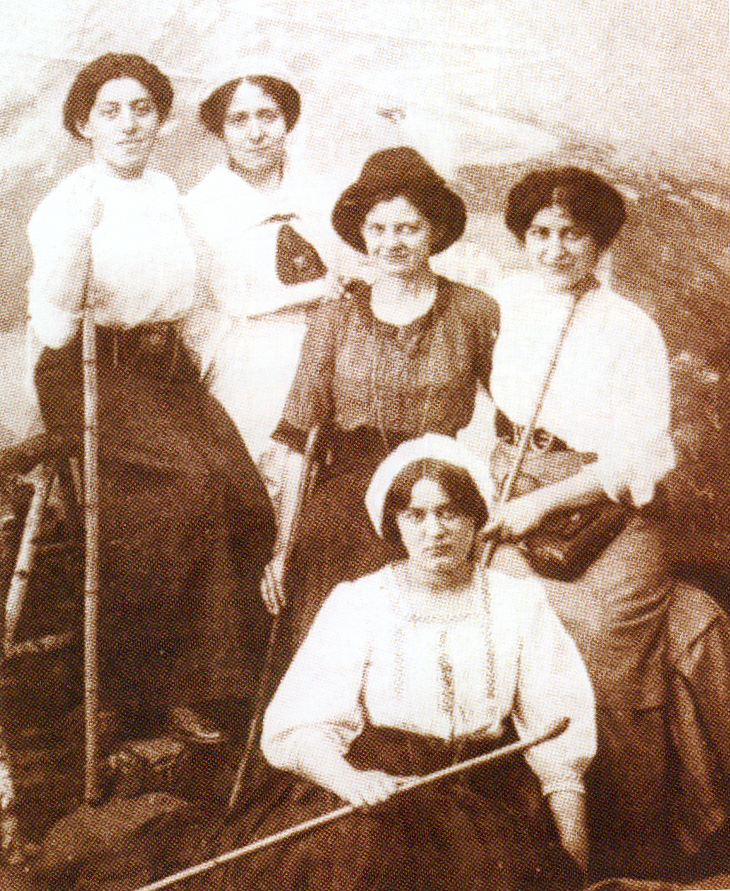
If we look at her childhood, we discover a girl who conforms herself to the traditions in force in her home: devout Judaism. When she reaches adolescence, a time of crisis, of endless questions, of searching for the meaning of the self, she consciously abandons religious practices which she finds empty of meaning and a simple traditional inheritance. An attitude that nowadays is so common among teenagers, and that may be even “positive” as long as it is a first step on a path of search and life approach, since the basis of religion, of faith, cannot be only a cultural attitude but a personal conviction which must become a living experience of the Mystery.
University
When Edith enters university and chooses to study psychology, philosophy and history, she does it motivated by a personal vocation, as well as her restlessness to find the meaning of human existence. When she encounters Husserl’s phenomenology, she realises that searching is not enough. For this search to be effective and give positive results, it must be accompanied by some basic attitudes which must permeate the whole path, the whole life. These are detachment from all personal, cultural, social and intellectual prejudices, and a continuous attitude of openness. Both attitudes are complemented by an active search, sincerity, objectivity and humility, which prepares the person at all times to welcome new truths and to break off with the acquired ones if they are discovered to be not so authentic.
These dispositions of the spirit, together with the work of grace, are what opened the way for the atheist Edith Stein to “culminate” her search in Christ.
In the Catholic Church
But her life does not stop there; at first, she falls into the easy temptation of “pietism”, believing that she has reached the final goal. Soon she realises and discovers that it is now, starting from baptism, that the journey really begins. The search for Truth is always progressive, the goal is not definitively reached, it is necessary to continue advancing.
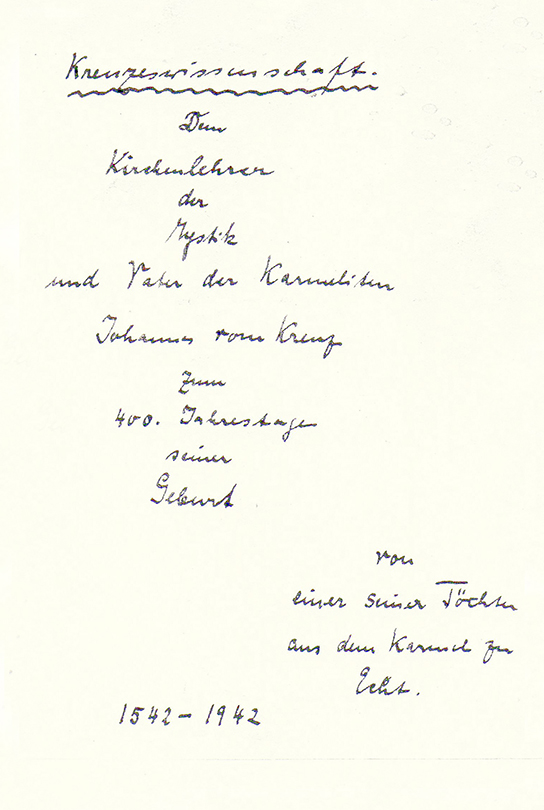
In her journey within the Catholic Church, she discovers new attitudes that complement and give full meaning to her vocation: her scientific activity cannot be closed in personal interest. Her ability is there as a gift for humanity. It is when she discovers that this activity has not only a material value but a profoundly apostolic-theological value, insofar as it is a contribution to the search for the authentic. Therefore, it is also a service to humanity. One conclusion is evident to us from her attitude: the decisive factors in the choice of a profession are the interior vocation and the dimension of service to the community.
Service to humanity
This vision of profession as an apostolate, of service, is an indispensable point in the living out, so urgent today within the Church, of witnessing with life to that union existing between faith and culture. There can be no rupture, quite the contrary. From the experience of God´s love, one easily arrives at the love for human beings. And from the love and respect for human beings, Love is reached. Edith Stein’s path is an example of this. Suffice it to recall the title of her great work: From the Finite Being to the Eternal Being.
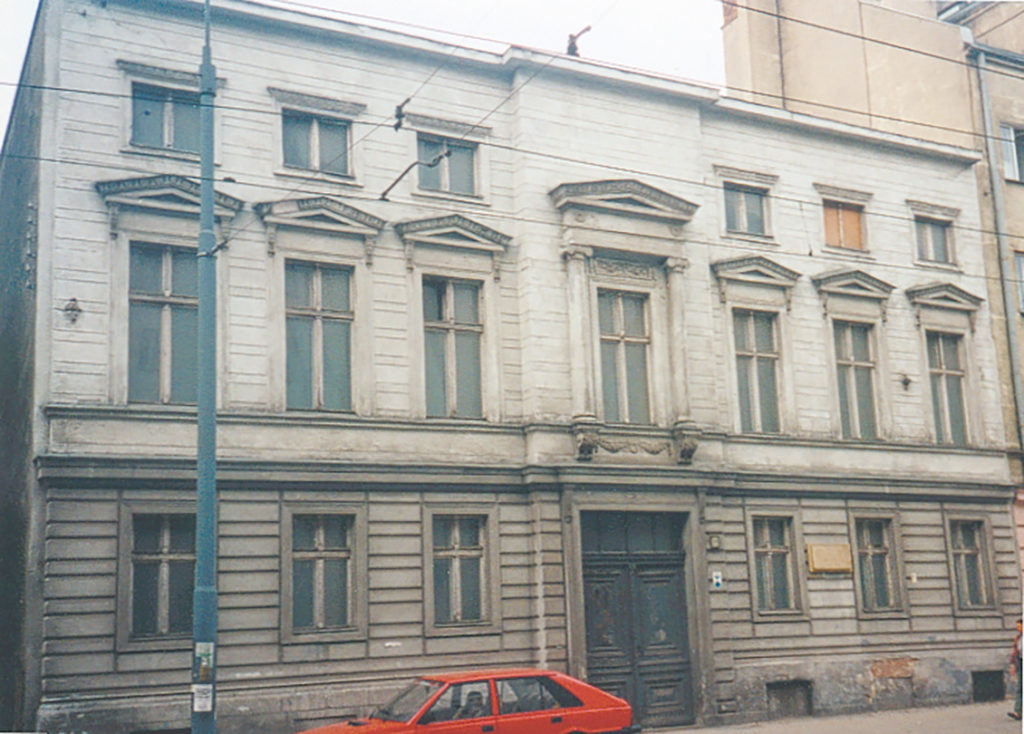
Now one could ask: In what sense is this unity discovered in her life? Fundamentally, it can be seen in her dedication to the problems of women, who were strongly marginalised in all sectors of society and in the Church herself. Her service was not carried out as a “revolutionary or fighter” – it was more profound. The recovery of human rights can be achieved from a clear awareness of the anthropological being of woman and man. In her personal vision, this is of utmost importance because it is an essential part of the search for truth that must be carried out not only by the individual but also by society itself and the Church. Again, the character of progressiveness-activity appears strongly. There is no endpoint.
Carmelite nun
In her life as a Carmelite, the last phase of her biography, she teaches us something more. The attitude of searching and openness is also her foundation here. The aspect which is discovered with greater force in this stage is the Absolute of God. Her experience and interpretation of history acquire a theological character. The signs of the times are also the Word of God. The difficulties, the problems, the Nazi persecution, etc., have a message. Their profound suffering is marked by the redemptive sign of hope, mysteriously present in the Crucified One. To unite oneself with Him at this moment is to give expiatory-apostolic value to pain. She does not seek suffering but accepts the cross that the historical moment entails. In faith, she discovers that, even in human impotence, incapable of overcoming so many situations on its own, much can be done. Only from this standpoint, can we discover the value of her martyrdom.

in a gas chamber on 9 August 1942. Credit: Javier Sancho OCD.
Finally, I would like to share a thought that may seem to us very suggestive and key in Edith Stein’s life. It leads us to think and to propose the direction we want to give to our life. Our realisation will depend on it. Edith tells us:
“What a person offers for their freedom and the purpose for which they give what they offer, decides the destiny of that person”.

